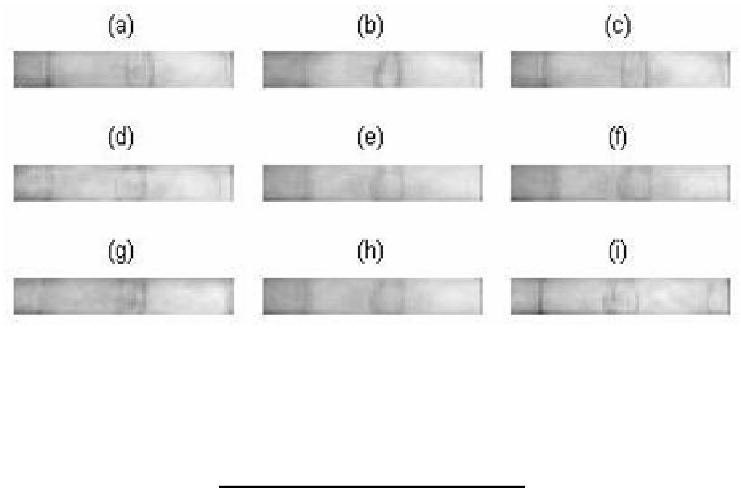Information Technology Reference
In-Depth Information
Fig. 2.
Finger texture ROI sample for matching. In the experiment, each ROI sample
with a 12
×
72 dimensionality has been used.
Table 1.
Palmprint QEPD computation among figure 1
Fig 1(b) 1(c) 1(d) 1(e) 1(f)
1(a)0.273 0.245 0.264 0.299 0.236
1(b)
0.270 0.347 0.382 0.322
1(c)
0.281 0.256 0.271
1(d)
0.221 0.060
1(e)
0.239
Table 2.
Finger texture QEPD computation among figure 2
Fig 2(b) 2(c) 2(d) 2(e) 2(f) 2(g) 2(h) 2(i)
2(a)0.245 0.149 0.382 0.202 0.265 0.436 0.242 0.397
2(b)
0.202 0.345 0.279 0.314 0.390 0.260 0.423
2(c)
0.292 0.268 0.343 0.422 0.300 0.384
2(d)
0.408 0.509 0.431 0.457 0.386
2(e)
0.178 0.419 0.160 0.417
2(f)
0.362 0.072 0.496
2(g)
0.331 0.475
2(h)
0.477
we defined. The matching between the samples from the same person is defined as
inner-class matching; otherwise, it is classified as outer-class matching. Totally,
about 160,000 (400
400) matching have been performed, where 3,600 matching
are inner-class matching. Figure 3(a) and (b) show the distribution of inner-class
and outer-class discriminant distance of palmprint and middle finger texture
respectively. From them, it is easily found that peak of palmprint inner-class
QEPD is at about matching score 0.1, and 0.12 by finger texture, where the
×






Search WWH ::

Custom Search